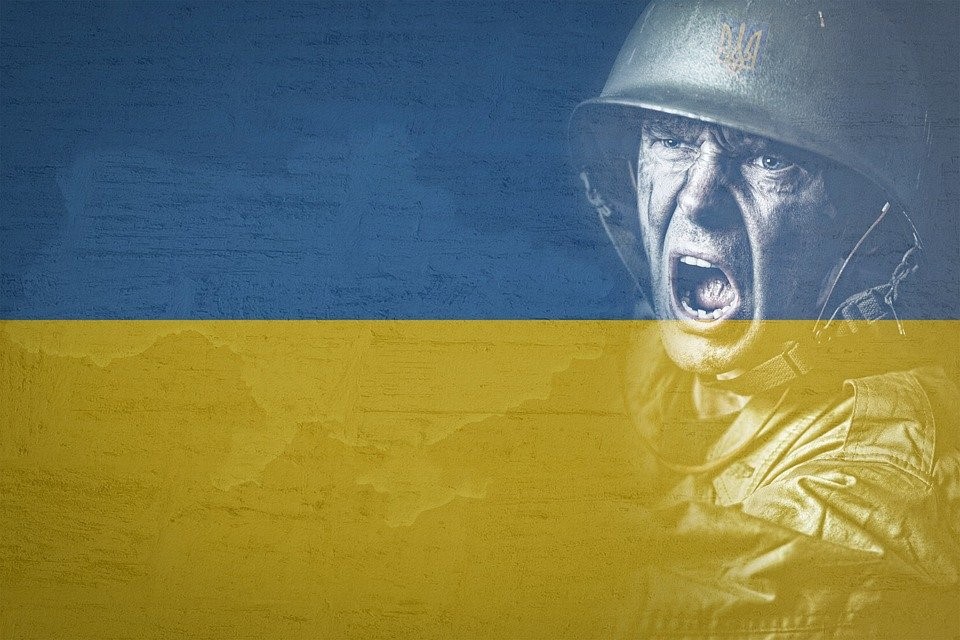Independence Day in Ukraine falls on August 24th each year. Today marks the 31st anniversary of when Ukraine voted to break with the former Soviet Union. It also falls exactly six months into a lethal war with Russia. The day was marred by explosions, death, and more destruction inside Ukraine as Russian forces bombed a train station killing at least 22 individuals and the day is not yet over in Ukraine. In an emotional speech deliver by President Volodymyr Zelensky, he called for Ukrainians to fight for their freedom rather than simply voting for it at the ballot box. “A new nation emerged on February 24 at 4 am. Not born, but reborn. A nation that didn’t cry, didn’t scream, didn’t get scared. Didn’t run away. Didn’t give up. Didn’t forget,” he said.
Although Putin is fighting a protracted war on the Russia’s western border area in Ukraine, all is not quiet on Russia’s eastern front. Just one day prior to Ukraine’s Independence Day Russia sailed 14 of its Navy ships through the La Perouse Strait from the Western Pacific Ocean into the Sea of Japan, according to Dzirhan Mahadzir of USNI News. The move was designed to unnerve Japan. The La Perouse Strait is an international waterway dividing Russia’s Sakhalin island from Japan’s Hokkaido island. The ships included a destroyer, fast attack craft, missile range instrumentation and hospital ships, among others. According to Japan’s Defense Minister Nobuo Kishi, Japan asked Russia late last month not to traverse the waterway in anticipation of the Vostok-2022 strategic military exercise that runs from August 30 to September 5. Russia didn’t listen.
Back home in Moscow, Putin’s disinformation forces are hard at work creating a monkeypox narrative, in a reprise of the previous campaign to link the Covid virus to alleged US biolab operations. Foreign Policy magazine’s Ivana Stradner reports that “Russian Duma Deputy Chair Irina Yarovaya echoed the Kremlin’s latest conspiracy theory earlier this month when she called on the World Health Organization to lead an investigation into “the secrets of the US military biolaboratories.” Stradner calls it a “textbook Kremlin information operation.”
East, west, or inside the Russian Federation, Putin is not letting up or bypassing any opportunity to destabilize the global environment. What concerns several military analysts in Washington more than Russia’s flotilla off Japan or its recent disinformation campaigns is the possibility that Putin could decide to damage the Zaporizhzhia nuclear power plant located only four miles from the city of Nikopol in southern Ukraine. On March 4 Russian military forces captured the plant and have held it since that time. UN Secretary-General António Guterres earlier this month said: “Any attack to nuclear plants is … suicidal,” and called for the plant to be demilitarized. Of the 11,000 regularly employed at the facility, 1,100 have been taken hostage by Russian forces. Ukrainian engineers are being tortured and forced to work at gunpoint to keep the operation running according to Petro Kotin, president of Energoatom, Ukraine’s nuclear power utility. It appears that Putin intends to remove the power plant from Ukraine’s electric grid in an attempt to further destroy the country. It delivers 50% of Ukraine’s power requirements and is the largest plant in Europe.
Secretary of State Tony Blinken says that Putin is using the plant strategically as a form of protection — shielding troops, weapons and ammunition. And, in doing this, Russia has stopped Ukraine from damaging its stock and soldiers on the assumption that an attack would cause a meltdown or nuclear disaster. “Of course the Ukrainians cannot fire back lest there be a terrible accident involving the nuclear plant,”, adding that Russia isn’t creating a “human shield,” but rather a “nuclear shield.” Earlier this week, Rafael Grossi, chief of the International Atomic Energy Agency, which is under the UN, urged Ukraine and Russia to allow experts to visit the site in an effort to prevent a nuclear accident. The IAEA reports it was told it could visit the plant “within the next few days” if the talks succeed. If the political-military situation is not stabilized and an errant shell hits the plant, it could result in a major leak of radioactive material. Once released into the atmosphere it could contaminate a wide swath of Europe, including Poland, with a population of over 38 million. In May the BBC posed the question, what does Vladimir Putin want? Today the question has morphed into what is he going to do next?
Daria Novak served in the U.S. State Dept.
